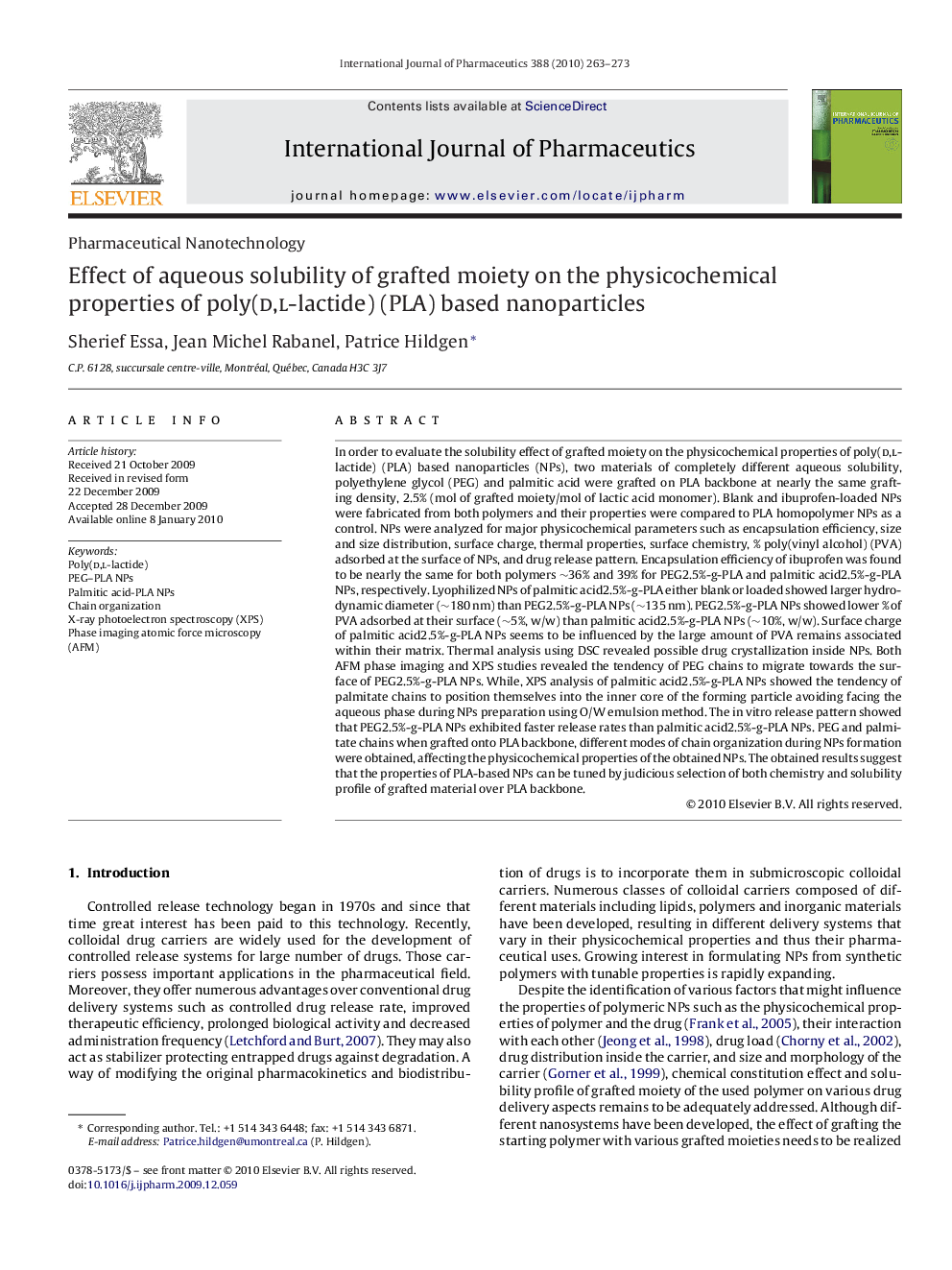| کد مقاله | کد نشریه | سال انتشار | مقاله انگلیسی | نسخه تمام متن |
|---|---|---|---|---|
| 2504426 | 1557455 | 2010 | 11 صفحه PDF | دانلود رایگان |

In order to evaluate the solubility effect of grafted moiety on the physicochemical properties of poly(d,l-lactide) (PLA) based nanoparticles (NPs), two materials of completely different aqueous solubility, polyethylene glycol (PEG) and palmitic acid were grafted on PLA backbone at nearly the same grafting density, 2.5% (mol of grafted moiety/mol of lactic acid monomer). Blank and ibuprofen-loaded NPs were fabricated from both polymers and their properties were compared to PLA homopolymer NPs as a control. NPs were analyzed for major physicochemical parameters such as encapsulation efficiency, size and size distribution, surface charge, thermal properties, surface chemistry, % poly(vinyl alcohol) (PVA) adsorbed at the surface of NPs, and drug release pattern. Encapsulation efficiency of ibuprofen was found to be nearly the same for both polymers ∼36% and 39% for PEG2.5%-g-PLA and palmitic acid2.5%-g-PLA NPs, respectively. Lyophilized NPs of palmitic acid2.5%-g-PLA either blank or loaded showed larger hydrodynamic diameter (∼180 nm) than PEG2.5%-g-PLA NPs (∼135 nm). PEG2.5%-g-PLA NPs showed lower % of PVA adsorbed at their surface (∼5%, w/w) than palmitic acid2.5%-g-PLA NPs (∼10%, w/w). Surface charge of palmitic acid2.5%-g-PLA NPs seems to be influenced by the large amount of PVA remains associated within their matrix. Thermal analysis using DSC revealed possible drug crystallization inside NPs. Both AFM phase imaging and XPS studies revealed the tendency of PEG chains to migrate towards the surface of PEG2.5%-g-PLA NPs. While, XPS analysis of palmitic acid2.5%-g-PLA NPs showed the tendency of palmitate chains to position themselves into the inner core of the forming particle avoiding facing the aqueous phase during NPs preparation using O/W emulsion method. The in vitro release pattern showed that PEG2.5%-g-PLA NPs exhibited faster release rates than palmitic acid2.5%-g-PLA NPs. PEG and palmitate chains when grafted onto PLA backbone, different modes of chain organization during NPs formation were obtained, affecting the physicochemical properties of the obtained NPs. The obtained results suggest that the properties of PLA-based NPs can be tuned by judicious selection of both chemistry and solubility profile of grafted material over PLA backbone.
Journal: International Journal of Pharmaceutics - Volume 388, Issues 1–2, 30 March 2010, Pages 263–273